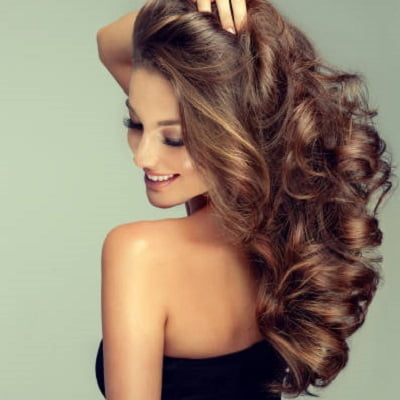
Men’s hair wigs are becoming more and more stylish and practical ways to hide hair loss. Moreover, these are quick and easy ways to improve your look and boost your confidence. Many wig users do, however, worry about the danger of lice. Therefore, this blog post will cover Can Hair Wigs for Men Cause Lice, how to prevent lice, and how to maintain cleanliness and health when using wigs.
Understanding Lice Infestation
Tiny insects, and lice live on the head and eat blood. Therefore, those who come close to an infected individual or trade personal goods such as wigs, combs, and caps might quickly pick them up. Three different types of lice live on humans: head lice, body lice, and pubic lice. The most common kind is head lice, primarily spread by often touching heads.
Can Hair Wigs for Men Cause Lice?
If you have the question Can Hair Wigs for Men Cause Lice, the short answer is no; lice are not brought about by hair wigs. Moreover, lice require a human host to exist, so they cannot spend long on inert items. Wigs could, however, become lice-infested should they come into touch with someone with lice on their skin or hair. Though they may sneak into wigs from a host with lice, lice do not start from wigs.
How May You Get Lice on Your Wig?
Lice may find their way on wigs in many ways:
- Direct Contact: Should you loan your wig to someone with lice, the lice will migrate from their hair to yours.
- Improper Storage: Keeping your wig next to beds or clothes contaminated with lice might help to distribute the lice.
- Borrowed Wigs: You can be more likely to catch lice if you borrow or wear wigs that haven’t been adequately cleaned or sterilized.
Preventing Lice from Affecting Hair Wigs
Do the following to keep lice out of your hair wig:
- Do Not Share Wigs: If you are unsure if someone has lice, do not let anybody wear yours.
- Methods of Storage: Store your wig somewhere dry and clean away from any infection sources.
- Regular Cleaning: Regular washing of your wig with the wig care products will help keep it clean.
- Regularly Check: Check your wig often for active lice or tiny white eggs called nits.
- Personal Hygiene: Hygiene for Personal Use Frequent head and hair washing can help you to maintain good personal hygiene and lower your risk of lice development.
Methods of Wig Cleaning and Maintenance
Your wig has to be correctly cleaned and maintained if you want it free of lice and other bacteria. Here’s how you clean your wig:
- Washing: Wash with a mild wig cleanser. Moreover, warm water should be filling a dish. The wig needs to be softly swished in the water. Steer clear of touching or bending the wig, which might harm the hair strands.
- Conditioning: Apply wig conditioner to maintain smooth and easy-to-style hair. Rinse thoroughly with cold water.
- Drying: Dab the wig with a towel to dry it, then lay it on a wig stand. Further, the heat from a hair dryer may damage the wig, so avoid using it.
- Brushing: To progressively free the hair, brush it with a wide-tooth comb or wig brush. Working from the ends to the roots.
How Would One Eradicate Lice from Wigs?
- Keep infected wigs away from others to prevent lice spread.
- Use a specially formulated wig shampoo when washing.
- Immerse the wig in hot water for 5-10 minutes to remove the last lice or nits.
- Check the wig’s dryness and look for any remaining lice or nits. If necessary, give the product another wash.
Talking with an Expert
If you are unsure how to properly wash or treat your wig for lice, see a certified wig specialist at SKN Cosmetics Islamabad. Moreover, they will provide professional guidance and suggested products to keep your wig lice-free and in great shape.
Final Thoughts:
In essence, lice cannot thrive on men’s hair wigs, yet they may find their home on them if not correctly cared for. However, if you regularly clean your wig and know the possible causes of lice infection, you may wear it without thinking about lice. Additionally, if you find lice, early treatment can help maintain the health of your wig and head.



